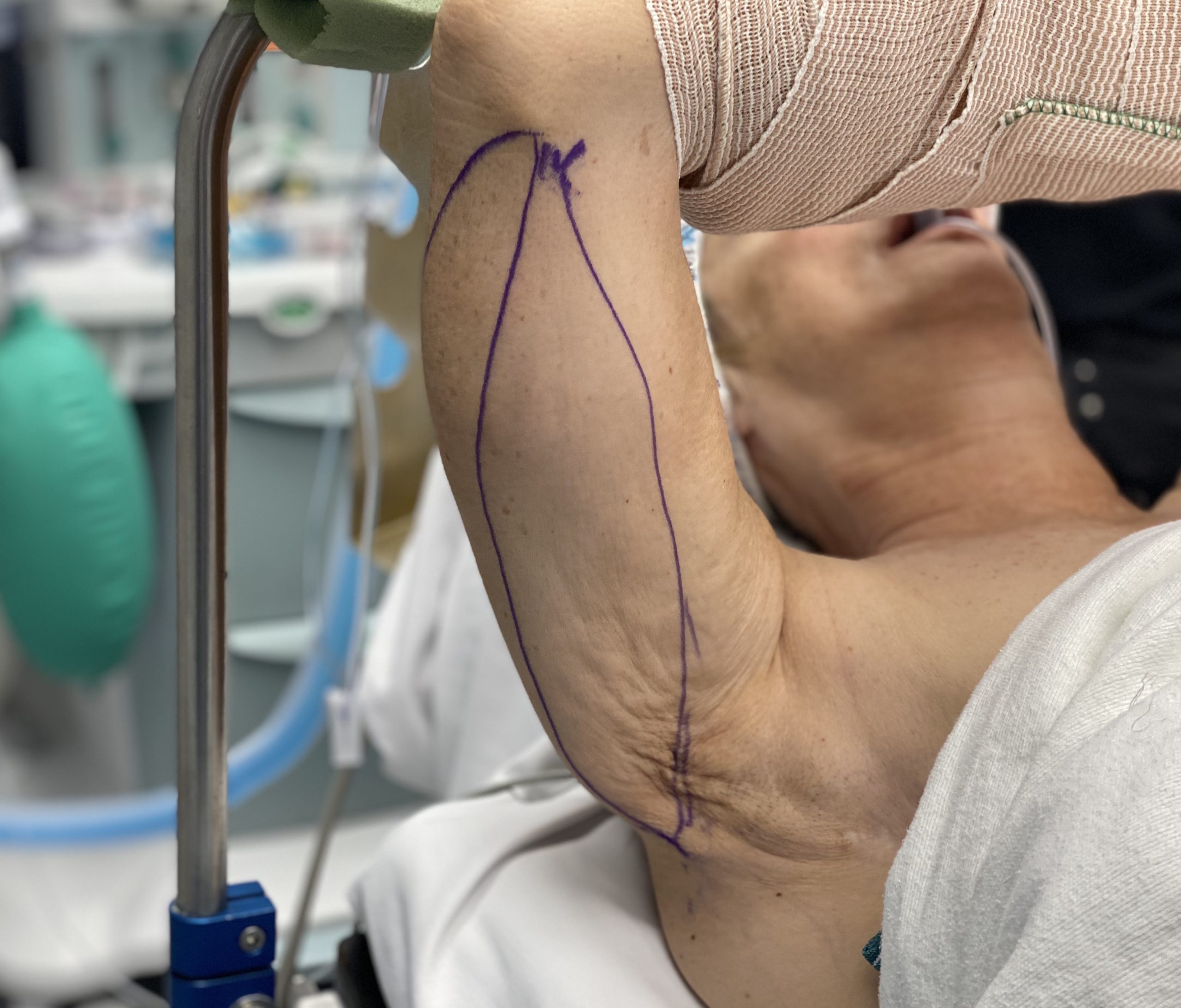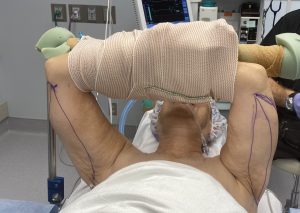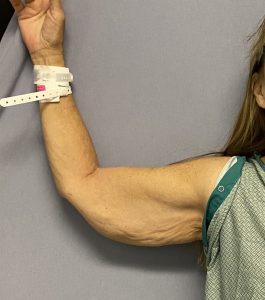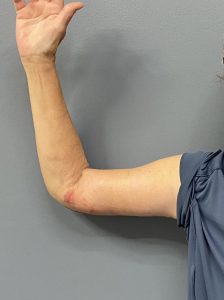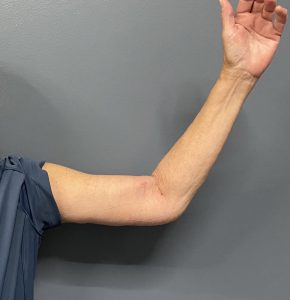Background: One of the many body changes that occur after significant weight loss are they development to varying degrees of so called ‘bat wings’. This is where loose skin and its underlying fatty tissue hang off of the arms making a large loose triceps back side region of the arms. It is called batwings because the loose tissue swings back and forth with arm motion due to the excess and very lax tissues.
In these large arm excesses excision of the hanging tissue is the definitive treatment. There are numerous variations of the armlift procedure based on incision location (inner and back side of the arm), pattern of the excision as well as hw far forward to the elbowed or backwards into the armpit the excision extends. While all of these aspects of an armlift are important, achieving as tight an arm as possible is also an important goal. There is less talked about how to achieve that then other aspects of the armlet.
Armlift surgery is unique because intraoperative positioning is difficult. The ideal way to do an armlet is with the patient standing, arms out and operating from underneath it as this allows the true natural hang of the arms to be seen. This would also allow for theist judgment on how much back of the arm tissue to be removed. But this type of intraoperative positioning is obviously impractical.
Case Study: This older female has lost a significant amount of weight and she bothered significantly by her loose upper arm tissue. As an avid golfer this also posed a problem for her golf swing
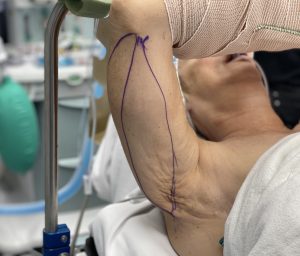
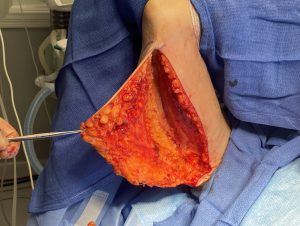

When seen 3 days after surgery the significant improvement in her arm shape was seen.
There are numerous methods to perform an armlift. The fasciocutaneous flap method in the elevated crossed arm intraoperative position offers a reliable and straightforward method to safely maximize the upper arm tightening effect.
Case Highlights:
- Major armlifts are typically done in the patient who has undergone significant weight loss.
- Armlifts are excisional procedures of which one technique is the fasciocutaneous flap overlap method.
- Maximizing an armlift result is a delicate balance between taking enough loose tissue to tighten the arm as much as possible but not to the extent that the closure is overlying tight and risks postoperative wound separation.
Dr. Barry Eppley
World Renowned Plastic Surgeon

